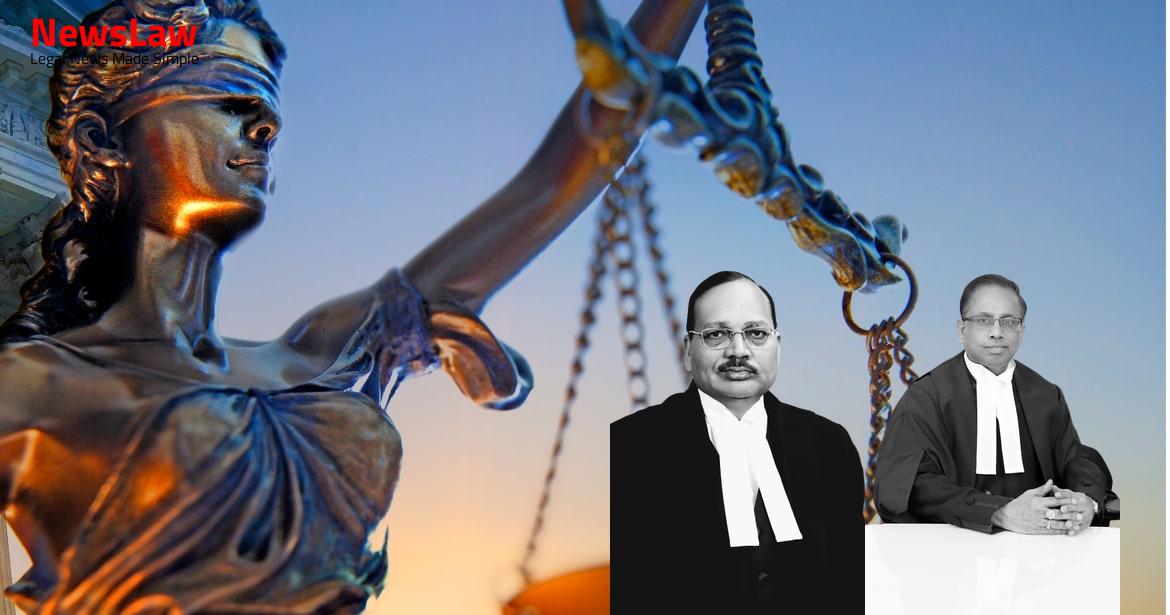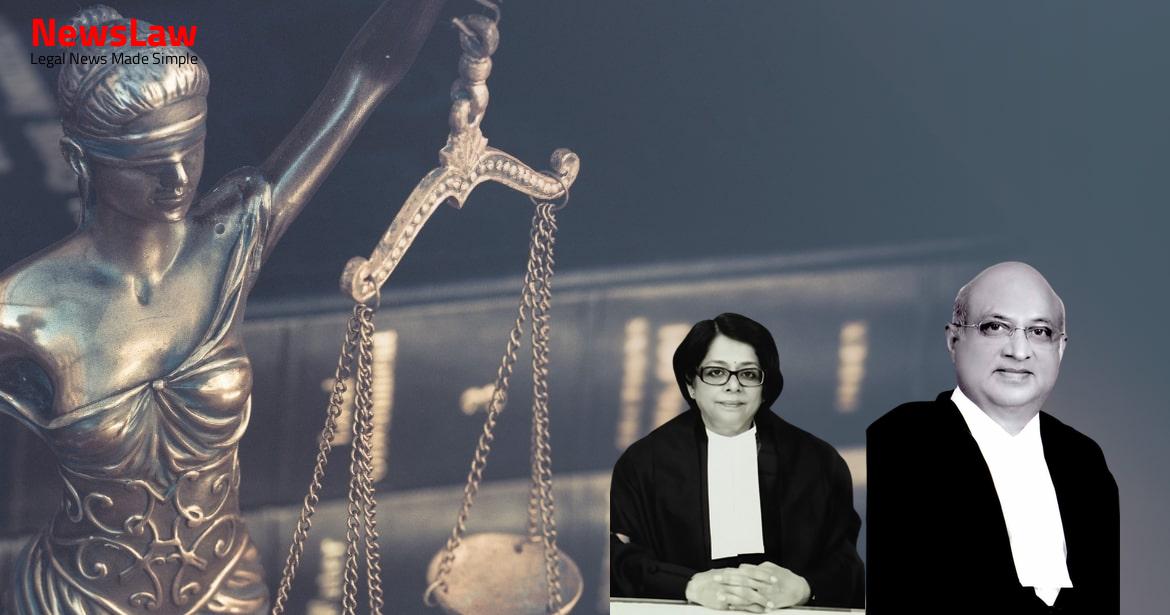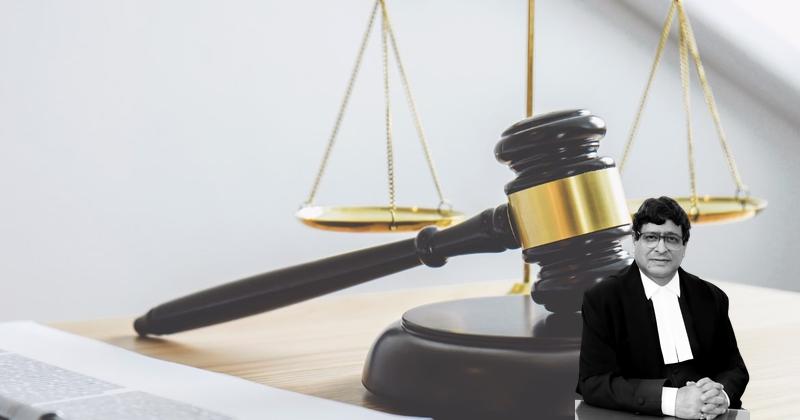In the case of State v. Accused, the State prosecuted the accused for the murder of multiple individuals, leading to a conviction and subsequent sentencing by the High Court. The sentencing considerations included the brutal nature of the murders and the accused’s behavior post-offence. Stay tuned to learn more about the legal intricacies of this case.
Facts
- The accused was found guilty of committing murder of four persons including an 11-year-old child and an 80-year-old lady after committing house-trespass.
- The trial court initially imposed the death sentence, which was later commuted to life imprisonment for a minimum of 20 years including the time already spent.
- The High Court further modified the sentence to 30 years of imprisonment with no remission, taking into account aggravating and mitigating circumstances.
- The accused was also sentenced for other offenses under Section 449 IPC and Section 309 IPC, with respective terms of rigorous and simple imprisonment along with fines.
- The sentencing considerations included the brutal and premeditated nature of the murders, along with the accused’s attempt to commit suicide, leading to the original death sentence being commuted.
- The appellant was found with a cut on his left wrist inside the house.
- The accused claimed there was a suicide pact with Latha, but found everyone dead/injured upon entry.
- Accused implied someone else entered the house and caused the deaths.
- Prosecution examined 32 witnesses and proved Exhibits P1 to P45 series.
- The domestic help found the family missing and blood drips outside the house, raising an alarm.
- Neighbors and police were called after the discovery by the domestic help.
- The appellant allegedly had a previous relationship with Latha.
- The incident involved the death of Ramachandran, Chitra, and severe injuries to Karthiyani Amma and Latha.
- The case relies on circumstantial evidence as the incident occurred on 03.11.2005/04.11.2005.
- Investigating officers observed blood droplets leading through different rooms in the house.
Arguments
- Mr. Renjith B. Marar, learned counsel for the appellant, presented detailed arguments covering all aspects of the case.
- He highlighted that the prosecution’s case lacked sufficient evidence required for a conviction based on circumstantial evidence.
- Specific contentions challenging individual circumstances were addressed while tabulating the circumstances.
- It was argued that the sentence of 30 years without remission was excessive and a more appropriate sentence was requested in the interest of justice.
- The counsel asserted that based on the evidence presented, sustaining the conviction would be unsafe and advocated for complete acquittal.
- Mr. Renjith B. Marar, learned counsel, challenged the evidence of PW-3 stating no test identification parade was held
- The identification of the accused was done for the first time at the police station according to PW-3
- The learned senior counsel vehemently rebutted the arguments of the appellant and supported the conclusion of guilt by the trial court and High Court
- The sentence was argued not to deserve any further modification by the senior counsel
- Mr. Renjith B. Marar, learned counsel, contended that the handwriting expert was not examined in the case, citing the judgment in Padum Kumar v. State of Uttar Pradesh, (2020) 3 SCC 35
- The submission regarding the non-examination of the handwriting expert was refuted based on Section 293 of the Code of Criminal Procedure
- Exhibit P-42 Report was prepared by Dr. K.P. Jayakumar, Joint Director (Research), Forensic Science Laboratory, Thiruvananthapuram
- The sentence modification by the High Court was discussed, with the learned senior counsel stating that the case initially warranted death penalty but was modified to 30 years imprisonment for the offence under Section 302
Also Read: Invalid Appointment and Manipulation in a School
Analysis
- The burden of proof shifted to the appellant to provide a plausible explanation for the committed offenses once the prosecution successfully discharged its burden.
- Various prosecution witnesses testified about the hole in the eastern wall of the house, linking it to the crimes.
- A seizure memo for the nail clippings was indeed present despite the argument stating otherwise.
- The report signed by the Joint Director of the forensic lab was deemed admissible in court, serving as crucial evidence.
- The timings of death established through post-mortem reports aligned with the accused’s presence at the crime scene.
- Hair strands found at the scene matched those of the accused as per forensic reports.
- Several items with incriminating writings on them were seized from the crime scene.
- Handwriting analysis confirmed that the writings were likely made by the accused.
- The court considered several preceding case laws to determine an appropriate sentence.
- Both aggravating and mitigating circumstances were evaluated in deciding the appropriate sentence for the accused, balancing factors like his age, the nature of the offence, and his conduct in jail.
- The court imposed a sentence of 30 years without remission based on the seriousness of the crimes committed.
- The court emphasized the need for proportionality in sentencing, considering the severity of the offence and the potential threat the accused posed to society.
- The court discussed the principle of proportionality in sentencing, considering factors like the act being premeditated, brutal murders, and the impact on multiple generations of a family.
- The court referred to handwriting and fingerprint analysis as supporting evidence of the accused’s involvement in the crime.
- The court highlighted the importance of burden of proof in cases where the accused holds vital information.
- The court’s decision to modify the death sentence to life imprisonment was influenced by various factors, including the young age of the accused, lack of personal gain from the crime, and emotional turmoil displayed by the accused post-offence.
- The accused in the case was found guilty of committing murder and was sentenced to 30 years in jail without remission.
- The accused had earned a diploma in food catering while incarcerated.
- The court emphasized socio-economic factors as mitigating factors in sentencing, considering the accused’s poor background as a reason for the crime.
- The court discussed the principles of proof based on circumstantial evidence and emphasized the need for conclusive evidence to establish guilt.
- Various cases were cited to support the decision-making process in determining the appropriate sentence based on mitigating and aggravating factors.
- Factors such as the nature of the crime, criminal antecedents, age of the accused, and conduct inside jail were considered in sentencing decisions.
- The court highlighted the importance of striking a balance between punishment and rehabilitation, taking into account the interest of society and the reformation potential of the accused.
- The court applied the principle of proportionality in sentencing, ensuring that the chosen sentence aligns with the severity of the crime and the societal impact.
- Disciplinary actions were not initiated against the appellant in prison.
- The conduct and behavior of the appellant in prison has been satisfactory.
- No negative incidents related to the appellant’s behavior were reported in the prison.
Also Read: Court’s Analysis in Disciplinary Case
Decision
- The High Court’s judgment on the conviction of the appellant under Sections 302, 449, and 309 IPC is upheld.
- The sentence imposed on the accused for the offence under Section 449 and Section 309 of IPC is not interfered with.
- The High Court’s sentencing following the Swamy Shraddananda principle for the offence under Section 302 IPC is justified.
- The sentence under Section 302 imposed by the High Court is modified from 30 years imprisonment without remission to 25 years imprisonment without remission, including the period already undergone.
- The modification of the sentence is deemed to serve the ends of justice.
Case Title: NAVAS @ MULANAVAS Vs. STATE OF KERALA (2024 INSC 215)
Case Number: Crl.A. No.-001215-001215 / 2011



